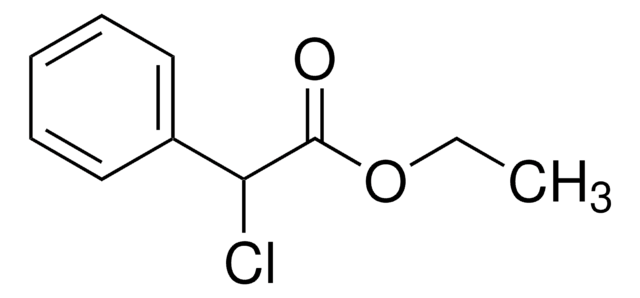157139
2-Chlorpropionylchlorid
97%
About This Item
Empfohlene Produkte
Qualitätsniveau
Assay
97%
Form
liquid
Brechungsindex
n20/D 1.440 (lit.)
bp
109-111 °C (lit.)
Dichte
1.308 g/mL at 25 °C (lit.)
SMILES String
CC(Cl)C(Cl)=O
InChI
1S/C3H4Cl2O/c1-2(4)3(5)6/h2H,1H3
InChIKey
JEQDSBVHLKBEIZ-UHFFFAOYSA-N
Suchen Sie nach ähnlichen Produkten? Aufrufen Leitfaden zum Produktvergleich
Verwandte Kategorien
Anwendung
- as reagent in the chemical surface functionalization of parylene C
- in the preparation of a poly(ethylene glycol) macroinitiator, required for the atom transfer radical polymerization (ATRP) of styrene
- in the synthesis of (±)-mintlactone
- in the preparation of chlorine modified TiO2 nanoparticles, the ATRP initiators
Signalwort
Danger
H-Sätze
Gefahreneinstufungen
Acute Tox. 4 Oral - Eye Irrit. 2 - Flam. Liq. 3 - Skin Corr. 1B
Lagerklassenschlüssel
3 - Flammable liquids
WGK
WGK 3
Flammpunkt (°F)
94.1 °F - DIN 51755 Part 1
Flammpunkt (°C)
34.5 °C - DIN 51755 Part 1
Persönliche Schutzausrüstung
Faceshields, Gloves, Goggles, type ABEK (EN14387) respirator filter
Analysenzertifikate (COA)
Suchen Sie nach Analysenzertifikate (COA), indem Sie die Lot-/Chargennummer des Produkts eingeben. Lot- und Chargennummern sind auf dem Produktetikett hinter den Wörtern ‘Lot’ oder ‘Batch’ (Lot oder Charge) zu finden.
Besitzen Sie dieses Produkt bereits?
In der Dokumentenbibliothek finden Sie die Dokumentation zu den Produkten, die Sie kürzlich erworben haben.
Kunden haben sich ebenfalls angesehen
Unser Team von Wissenschaftlern verfügt über Erfahrung in allen Forschungsbereichen einschließlich Life Science, Materialwissenschaften, chemischer Synthese, Chromatographie, Analytik und vielen mehr..
Setzen Sie sich mit dem technischen Dienst in Verbindung.














